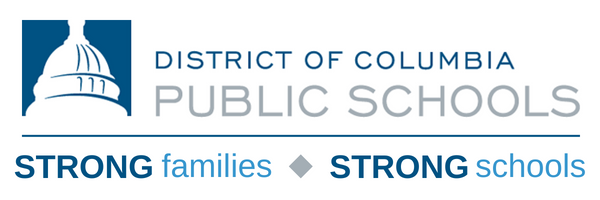FAQ
Frequently Asked Questions for Families about the 2020-2021 School Year.
How many students will DCPS be able to serve in person?
Following the guidelines of our health and safety protocols and pending staffing availability, DCPS can serve approximately 75 percent of enrolled PK-5 students in classrooms in Term 2. This translates to approximately 21,000 classroom seats.
While we cannot guarantee a seat for all students, we know some families want to continue the learning at home experience.
Will students in grades 6 through 12 be eligible for in-person programming in Term 2?
This message is archived. For information on the Term 3 learning model, visit dcpsreopenstrong.com/schedule/term3.
Who is eligible to attend an in-person learning classroom?
This message is archived. It is our hope to allow more students, especially those furthest from opportunity, to return to schools and receive the high-quality instruction and critical supports that prepare them for lifelong success.
All students who were enrolled as of October 5, 2020 will be eligible for a seat. DCPS is committed to prioritizing in-person learning seats for students furthest from opportunity. As such, students who fall within the following categories will have preference for the available in-person learning seats:
- Students experiencing homelessness,
- English Learners and students with Individualized Educational Plans (IEPs), and
- Students identified as At-Risk. (This includes students in the foster care system, and students who qualify for TANF or SNAP.)
The process will also give a preference to siblings. Siblings who are members of the groups listed above will be prioritized over siblings who are not members of these groups.
What are the classroom sizes for the in-person learning options?
We will continue to prioritize student and staff safety during in-person learning. We have determined the number of students who can safely be in each learning space according to CDC Health guidelines that allow for social distancing. Each classroom may enroll up to:
- 8 students in PK3
- 10 students in PK4 and K
- 11 students in grades 1 – 5
Self-contained special education classes will have even smaller classes than described above.
What are the hours of Student CARE classrooms?
The schedule and operations for Student CARE classrooms will vary by school. Schools will share their individual reopening plans with families in January.
Will transportation be provided?
Transportation will be provided if it is already on the students’ IEP as a related service.
What is a self-contained special education class?
This is full-time, outside-of-general-education instruction for some students with IEPs. In DCPS, this includes students who are already enrolled in Early Learning Supports (ELS), Communication and Education Supports (CES), Deaf and Hard of Hearing (DHH), Behavior and Education Supports (BES), Independence and Learning Supports (ILS), Medical and Educational Supports (MES) and Specific Learning Supports (SLS). Students in self-contained programs and River Terrace Education Campus will be welcomed back at half student capacity and full staff capacity.
What is a Student CARE Classroom?
Canvas Academics and Real Engagement (CARE) classrooms provide supervised virtual learning that provide students with a safe, consistent space to engage in virtual classes while receiving support from caring adults. Students continue their virtual learning with a small group of classmates within the school building.
CARE Classroom programming at select PK-5 grade schools starting opening on November 18 continued through January. Learn more at dcpsreopenstrong.com/schedule/care.
Will aftercare be available for students who return to in-person learning in Term 2?
This message is archived.
What will Term 3 look like?
It is our hope to allow more students, especially those furthest from opportunity, to return to schools and receive the high-quality instruction and critical supports that prepare them for lifelong success.
We will make an assessment around the success of Term 2 and use that to influence our decision-making for Term 3.


